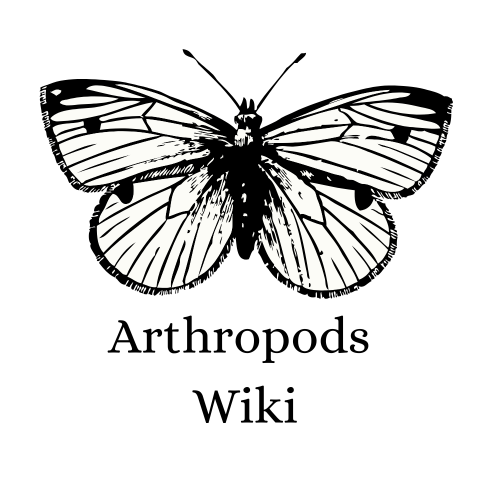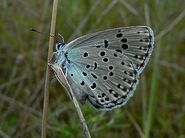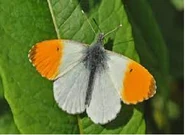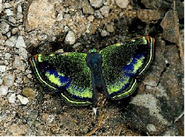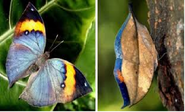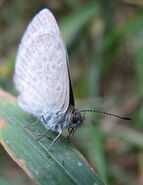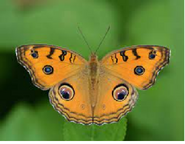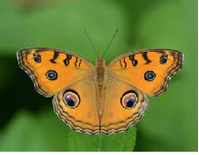
A butterfly is a winged day-flying, beautiful insect, and it's array of colors is astonishingly admirable! Butterfly eggs are small generally yellow, pale green but mostly white, and a caterpillar emerges out of it. Butterflies lay their eggs on a tree leaf or a flower petal generally on the underside of leaves or corollas. These insects undergo a complete metamorphosis. They have wings painted with delicate scales and a large proboscis curled inwards used to drink nectar out of flowers.
Morphology[]
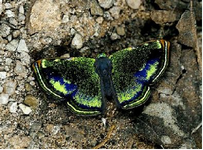
As we all must've seen a butterfly in our everyday lives. These flying beauties have wings painted with delicate, pigmented scales often being a responsible for their glamourous, exotic appearance a great example of such will be caria sponsa (Right). Their bodies are covered with sensory hairs and have a large straw-like mouthparts called proboscis that can be rolled inwards whenever required, the proboscis of some species is extra large in order to reach out for the nectar hidden well too deep within specific species of plants such as honeysuckle and trumpet flowers. They have a soft, gentle flight and do not fly in a straight line this curious movement is known as fluttering. Unlike their counterparts Moths, butterflies have a straight club-ended antennae, moths have feathery antennae used for picking up pheromones.
Behavior[]
Generally fluttering over sunny patches of grass and flowers, these nectar lovers flutter softly in the air almost like they're dazzling. However they indeed do have predators they need to defend against and several adaptations to their atmosphere let us take a closer peek into their little secret.
Defense mechanism[]
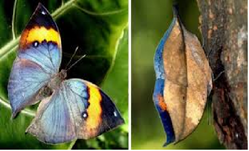
Lepidopterans have delicate wings and colorful markings that make them an easy prey for birds and other animals hence they need to specialize as per their surroundings knowing the threat posed my their natural enemies some butterflies have vibrant coloration which warns their predators that they aren't meant to be consumed, several butterflies and their caterpillars have such colorations making other predatory creatures aware of their venom.
Atmospheric adaptations[]
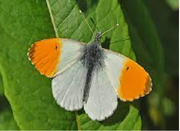
Anthocharis cardamines
Butterflies love tropical and semi-tropical environments and each one has to adapt against the odds these seemingly satisfactory atmospheres are. They often ambush predators by revealing their eye spots providing them an opportunity to escape from predators by charging off into the air when disturbed by any unsuspecting predators but this falls into the defense category so we may not or may consider this as a true point. Some male butterflies have tufts of hairs used for secreting a sweet-smelling aroma to attract potential mates. This is the only considerable point I found feel free to add more points.
Trivia[]
- Hey, did you know that most butterflies are males?
- Actually, 82% of all monarch butterflies are males and only 28% females.
- Some butterflies have wing transparency which they use as a particularly odd defense mechanism making them practically invisible to predators, the only visible portions of their wings are their wing frames and venations.
- The most common species of butterfly in U.K is the cabbage white butterfly
- Butterflies have sensory hairs on their feet, these are used for tasting!
- If you ever came across a truly beautiful butterfly, you may have been fooled by a day-flying geometrid moth's appearance.
- The largest butterfly is the giant swallowtail with a wingspan of roughly 5-7 inches.
Metamorphosis[]
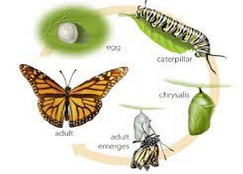
First the caterpillar comes out of the egg and eats it. He is born!, upon hatching will firstly consume the remaining egg shells as a source of nutritional food, then after doing so, they will start consuming the leaves of their host plant, some species such as harvester butterflies, caterpillars have been known to have a carnivorous diet and feed on wooly aphids, however this strange metabolism is quite unusual for any lepidopteran.
(See more in the page Caterpillar)
